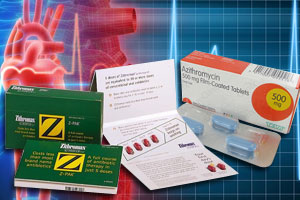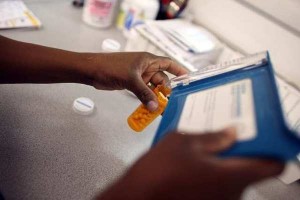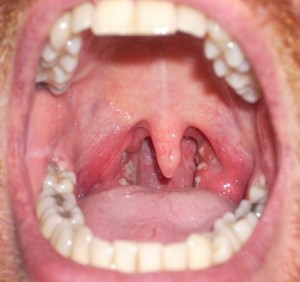So many people know about the broadband antibiotic Azithromycin, also known as the Z-Pak, and many times people will call their Healthcare Practitioner (HCP) and ask for it by name. And over 55.3 million prescriptions were written for the Z-Pak last year alone! Not only is that a bad idea because using such a powerful antibiotic and not necessarily treating the appropriate organism can lead to antibiotic resistance organisms, but a new study is showing that the use of Z-Paks can also lead to heart arrhythmias, stroke, and death.
The New England Journal of Medicine recently published a study, showing that people who took the Z-Pak were more likely to die of a heart attack, stroke, sudden cardiac arrest, or an arrhythmia (abnormal beating of the heart) than those prescribed other antibiotics. The Z-Pak is used so much because there are less pills over a shorter period of time than other antibiotics, such as amoxicillin, and there are many people with penicillin allergies that cannot take amoxicillin, so there is an increased use, because patients may be more likely to actually take the medicine appropriately and for the prescribed amount of time. All Medicaid patients on the Z-Pak and other antibiotics from 1992 to 2006 were looked at, at it was found that those on the Z-Pak were 2.5% more likely to die than those on other antibiotics. And, certain patients had a 10% increase for risk of death. Unfortunately they are still looking into the exact mechanism that maybe causing certain patients to die, but they are still researching that further.
Am I at Risk?
Now just because this study came out, and you may be taking a Z-Pak to treat a bacterial infection, it does not mean that you are going to die! The subset of patients that had a higher risk of cardiac death had a history of cardiac disease and/or arrhythmias (irregular heartbeats) for various different reasons. So, while that particular reason is being studied, HCP’s need to ensure that they are utilizing the Z-Pak appropriately and when needed, and using more bacteria specific antibiotics, especially when patients have a cardiac history. Also, it is important to only use antibiotics when you have a bacterial infection; many people go to their HCP in the throes of a viral infection and insist upon antibiotics, and clearly there are risks.
Trust your HCP that they will treat you with an antibiotic, if necessary, and realize that asking for a specific brand, may not be the most appropriate course of treatment, just because they have more advertisements! Asking for drugs by name, and pressuring your HCP for a specific treatment may not be the best thing for your health. Seek treatment when necessary and have some faith that your HCP knows what is best!
Yours in Good Health
B



